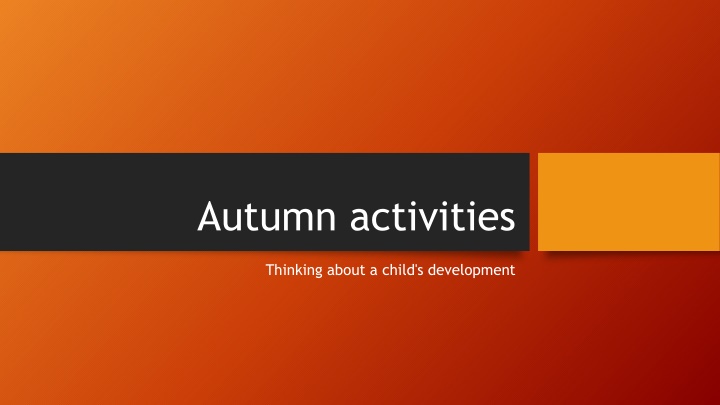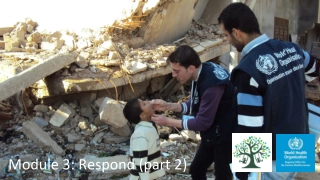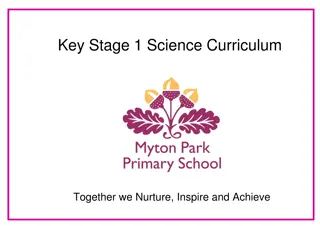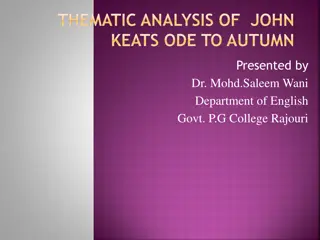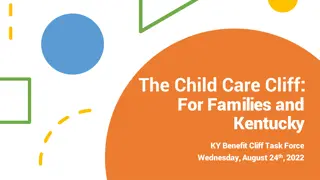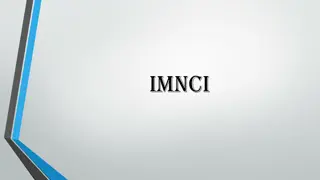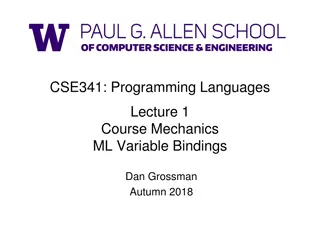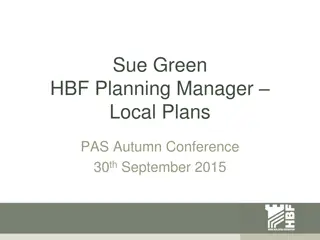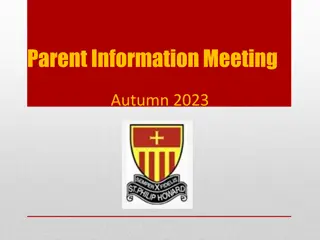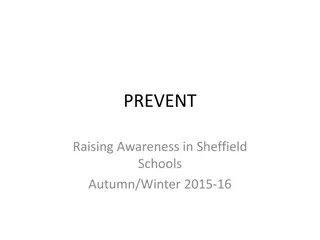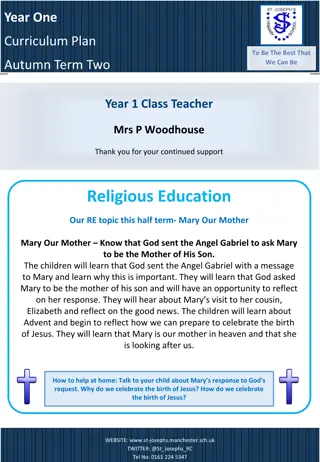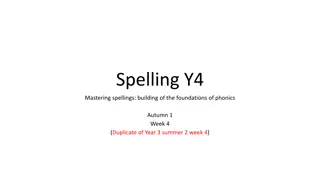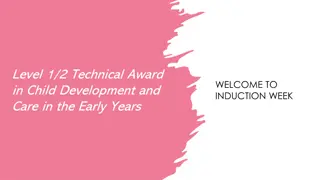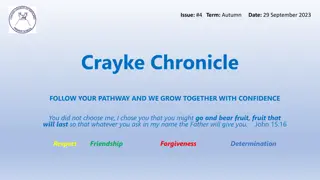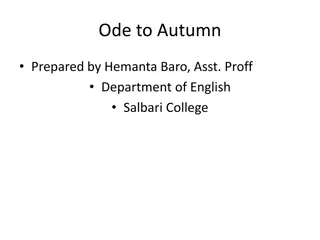Child Development Through Autumn Activities
Explore how autumn activities can promote cognitive, physical, personal, social, and emotional development in children. Enhance cognition by offering opportunities for exploration and problem-solving with autumn items. Develop physical skills through nature walks to find leaves and other treasures. Encourage fine motor skills with activities like painting and grasping various objects. Foster self-esteem and social skills through engaging in outdoor exploration with peers. By catering to different developmental needs, children can reach their full potential.
Download Presentation

Please find below an Image/Link to download the presentation.
The content on the website is provided AS IS for your information and personal use only. It may not be sold, licensed, or shared on other websites without obtaining consent from the author.If you encounter any issues during the download, it is possible that the publisher has removed the file from their server.
You are allowed to download the files provided on this website for personal or commercial use, subject to the condition that they are used lawfully. All files are the property of their respective owners.
The content on the website is provided AS IS for your information and personal use only. It may not be sold, licensed, or shared on other websites without obtaining consent from the author.
E N D
Presentation Transcript
Autumn activities Thinking about a child's development
Areas of development Cognition Neurological and brain development Speech, language and communication Physical Personal, social and emotion
Cognitive development Cognitive development means how children think, explore and figure things out. It is the development of knowledge, skills, problem solving and dispositions Give opportunities to think and find out. Offer lots of autumn items to look at. Plus where they come from.
Physical development Think Gross motor skills Fine motor skills Balance and stabilisation Running, walking, skipping and many more Activities: Go to the park try to find autumn items, leaves, acorns, conkers, and cones. Get a picture and challenge the children to find them
Grasp stages: Think age and development Inferior pincer grasp Superior pincer grasp Static tripod grasp Dynamic tripod grasp Activites: When creating a painting/drawing we can offer ranges of size of brushes /crayons/pencils Plus offer items to pick up of different sizes
Personal, Social and Emotional development Self esteem: The way you feel about yourself Self concept: how you see yourself can be called self image Activities: When collecting ask for a number of the items, colour, add them to your photos and praise when achieved. This helps children have a sense of achievement supports and encourages self esteem.
Temperament and behaviour Goodness of fit Personality Temperament Activity: help children learn to enjoy outdoors and discover nature. If possible make it with others so this becomes a fun social event. The children learn how to cope with different personalities, and characters too
Conclude So you can see that we can include all the development needs by offering children a variety of activities. As a professional practitioner no activity is just there, we plan for areas of development, helping children achieve. We observe children to see if we need to offer extra help by being guided on development and age. By doing this we can then help the children reach their potential and build confidence and self esteem. Think about all activities, from craft, theme, physical activities, intellectual, communication, and social.
